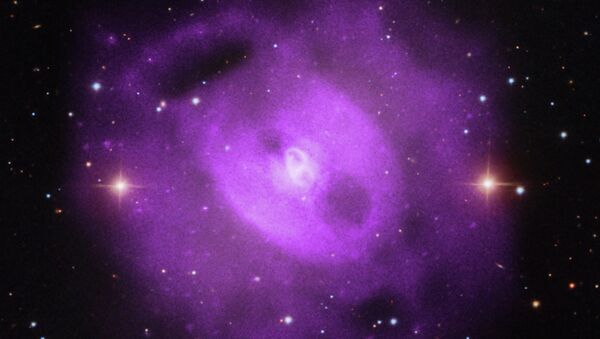A galaxy group is similar to a galaxy cluster but usually consists of 50 or less galaxies, whereas a cluster can comprise thousands of them.
Astronomers used the Chandra X-ray Observatory — NASA's flagship X-ray telescope — to conduct the longest study of a galaxy group ever: the research took over a week.
The study suggested that the center of galaxy group NGC 5813 contains a supermassive black hole, whose spin, "coupled with gas spiraling toward the black hole, can produce a rotating, tightly wound vertical tower of magnetic field that flings a large fraction of the inflowing gas away from the vicinity of the black hole in an energetic, high-speed jet", NASA explained.
Studying the characteristics of the three pairs, the researchers calculated that the formation of the last pair of "cavities" took less energy than the two older pairs. The scientists deduced an inference that the eruption of matter still occurs at the center of NGC 5813. This means the center of NGC 5813 influences both the group of galaxies itself and its neighbors, too.
The results of the study are available in The Astrophysical Journal.




